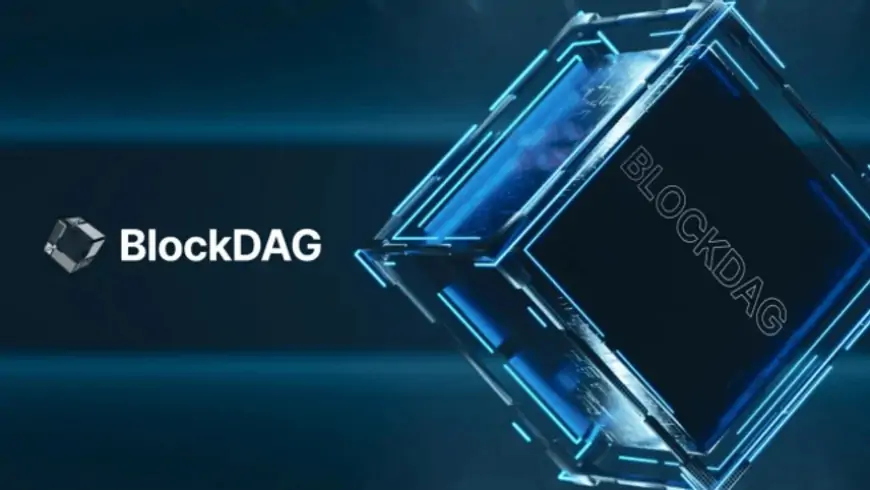What is BlockDAG? A comprehensive guide
BlockDAG advances blockchain tech with better scalability, throughput, and security. It addresses traditional limitations and may shape the future of decentralized tech.

Understanding BlockDAG
To understand BlockDAG, it's essential to first grasp the basics of blockchain technology. In a conventional blockchain, transactions are grouped into blocks that are connected in a linear, chronological chain. Each block contains a set of transactions, a cryptographic hash linking it to the previous block, and a timestamp.
Once a block is added to the chain, it becomes immutable. This sequential process means transactions are processed one after the other, which slows down the system and limits the number of transactions that can be processed per second. BlockDAG, which stands for Block Directed Acyclic Graph, offers an alternative to this linear structure.
Rather than adding blocks in a straight line, BlockDAG uses a directed acyclic graph to create a network of interconnected blocks. In this system, each block is linked to multiple others, forming a network rather than a single chain. This allows for faster transaction processing, as multiple nodes in the network can handle different actions simultaneously.
How BlockDAG Works
Directed Acyclic Graph (DAG) structure
The core of BlockDAG is based on the Directed Acyclic Graph (DAG) structure. In this system, edges have a defined direction, preventing any loops that would return to the same block. This architecture allows for multiple pathways and branches, enabling blocks to be connected to more than one parent block.
Parallel transaction processing
Traditional blockchains process transactions sequentially, which can lead to network congestion, especially as the network grows and the number of transactions increases.
In contrast, BlockDAG supports parallel processing, where multiple blocks, each linked to different sets of parent blocks, can be added simultaneously. This parallel approach significantly boosts the network’s capacity to process data more efficiently and quickly.
Conflict resolution
A challenge within BlockDAG systems is achieving consensus and resolving conflicts, particularly since multiple blocks can be added at the same time, potentially resulting in conflicting transactions.
To address this, BlockDAG systems utilize various consensus mechanisms. Some rely on a modified Proof of Work (PoW) algorithm, while others may use Proof of Stake (PoS) or alternative methods. The key is to implement a protocol that effectively resolves conflicts while preserving the network's integrity.
Advantages of BlockDAG
Scalability
A key benefit of BlockDAG is its exceptional scalability. Unlike traditional blockchains, where transactions are processed sequentially, BlockDAG allows for concurrent processing across the network. This enables the system to handle a much higher volume of transactions, making it versatile for various applications, from small-scale payments to large financial operations.
In a fast-paced world where instant results are increasingly demanded, BlockDAGs can deliver faster outcomes than traditional blockchains, all while ensuring transparency and security.
Increased throughput
BlockDAG significantly enhances transaction throughput compared to traditional blockchains by leveraging parallel processing. This boost in efficiency is particularly beneficial for industries that require rapid and large-scale transaction processing, such as finance and supply chain management.
Enhanced security
BlockDAG also offers strong security features. Since each block is connected to multiple other blocks, it becomes incredibly difficult for any single node to gain control of the system. Additionally, BlockDAG systems are more resilient to attacks and hacking attempts compared to traditional blockchains, with built-in consensus mechanisms designed to defend against a variety of threats.
Challenges and considerations
Complexity
Building and managing a BlockDAG system is inherently more complex than working with a standard blockchain. The need to handle multiple blockchains, resolve conflicts, and achieve consensus in a more intricate network adds layers of complexity to the process.
Consensus mechanisms
Designing effective consensus mechanisms for BlockDAG is a significant challenge. These mechanisms must balance security, efficiency, and scalability while resolving conflicts and maintaining the overall integrity of the network.
Adoption and compatibility
As with any emerging technology, widespread adoption of BlockDAG may take time. Its success will largely depend on its ability to integrate with existing systems and operate alongside other blockchains.
BlockDAG represents a significant innovation in blockchain technology, offering solutions to the scalability and throughput limitations of traditional blockchains. By leveraging a directed acyclic graph structure, BlockDAG enables concurrent transaction processing, enhanced scalability, and improved security. Despite the challenges that come with its implementation, the potential advantages make BlockDAG an exciting development in decentralized technologies. As research and development continue, BlockDAG could play a pivotal role in the evolution of blockchain technology and its broader applications.












































